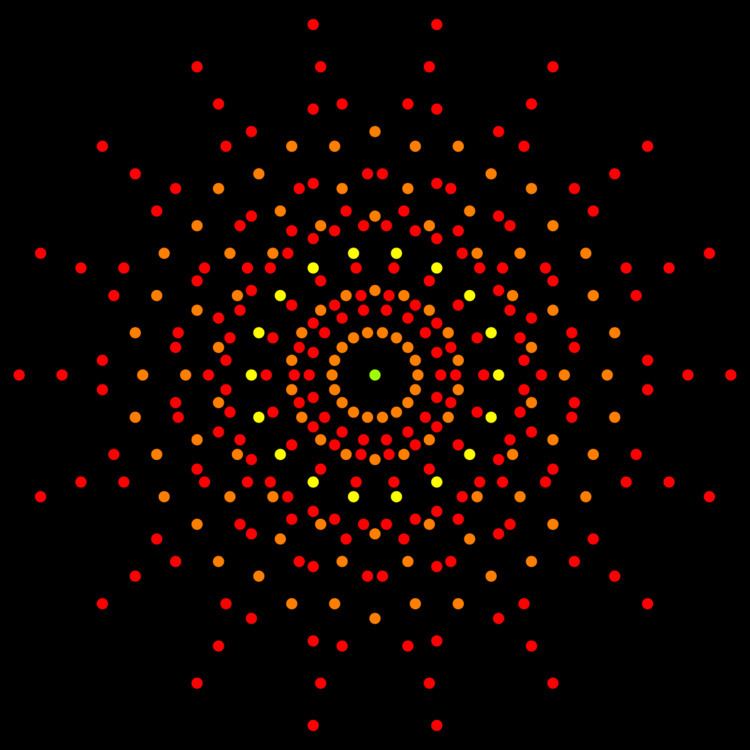 | ||
In geometry, a 9-cube is a nine-dimensional hypercube with 512 vertices, 2304 edges, 4608 square faces, 5376 cubic cells, 4032 tesseract 4-faces, 2016 5-cube 5-faces, 672 6-cube 6-faces, 144 7-cube 7-faces, and 18 8-cube 8-faces.
Contents
It can be named by its Schläfli symbol {4,37}, being composed of three 8-cubes around each 7-face. It is also called an enneract, a portmanteau of tesseract (the 4-cube) and enne for nine (dimensions) in Greek. It can also be called a regular octadeca-9-tope or octadecayotton, as a nine-dimensional polytope constructed with 18 regular facets.
It is a part of an infinite family of polytopes, called hypercubes. The dual of a 9-cube can be called a 9-orthoplex, and is a part of the infinite family of cross-polytopes.
Cartesian coordinates
Cartesian coordinates for the vertices of a 9-cube centered at the origin and edge length 2 are
(±1,±1,±1,±1,±1,±1,±1,±1,±1)while the interior of the same consists of all points (x0, x1, x2, x3, x4, x5, x6, x7, x8) with −1 < xi < 1.
Derived polytopes
Applying an alternation operation, deleting alternating vertices of the 9-cube, creates another uniform polytope, called a 9-demicube, (part of an infinite family called demihypercubes), which has 18 8-demicube and 256 8-simplex facets.
